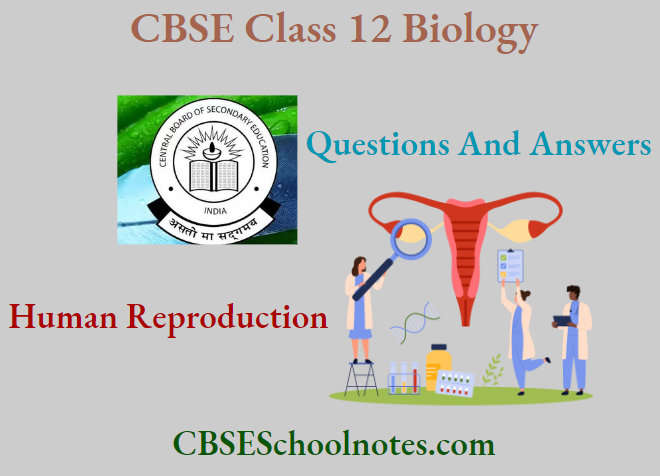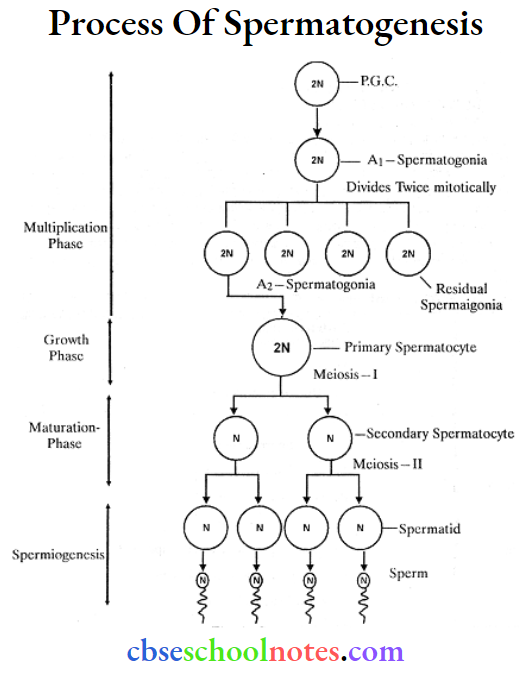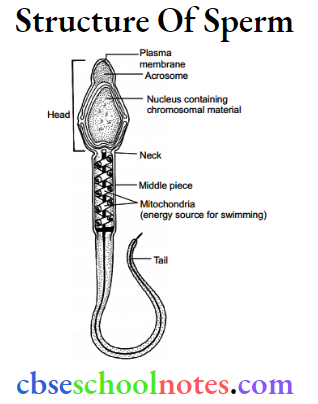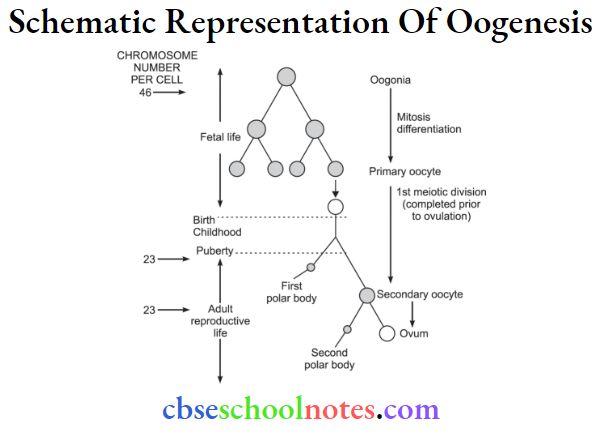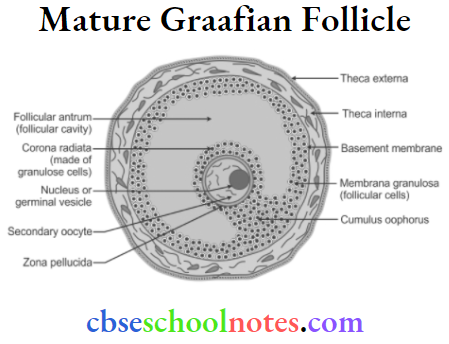Sexual Reproduction In Flowering Plants Question And Answers
Question 1. Name the parts of an angiosperm flower in which the development of male and female gametophytes takes place.
Answer:
Development of male and female gametophytes takes place in anther and ovary respectively.
Question 2. Differentiate between microsporogenesis and megasporogenesis. Which type of cell division occurs during these events? Name the structures formed at the end of these two events.
Answer:
Differentiate between microsporogenesis and megasporogenesis:

Meiosis occurs during micro and megasporogenesis. Microspores (pollen grains) are formed at the end of microsporogenesis and female gametophytes (embryo sac) are formed at the end of megasporogenesis.
Question 3. Arrange the following terms in the correct developmental sequence: pollen grain, sporogenous tissue, microspore tetrad, pollen mother cell, and male gametes.
Answer:
Sporogenous tissue – Pollen mother cell – Microspore tetrad – Pollen grain – Male gametes
Read and Learn More Class 12 Biology Chapter Wise
Question 4. Describe the parts of a typical angiosperm ovule with a neat, labeled diagram.
Answer:
Structure of megasporangium.

Question 5. What is meant by the monosporic development of a female gametophyte?
Answer:
Out of the four megaspores, three degenerate and only one remains functional, which develops into a female gametophyte or embryo sac. This is called monosporic development, i.e. when an embryo sac develops from one single megaspore it is called a monosporic embryo sac.

Question 6. With a neat diagram and explain the 7-called, 8-nucleate nature of the female gametophyte.
Answer:
A female gametophyte or embryo sac is a small oval structure that contains a 3-celled egg apparatus, 3 antipodal cells, and one binucleate central cell, hence it is a 7 – 7-celled and 8 – -nucleate structure.
- Egg apparatus: It consists of two synergids and an egg cell towards the micropylar end. The cells of the egg apparatus are uninucleated. Synergids towards their micropylar end have cellular thickening called filiform apparatus that help in guiding the pollen tubes into the synergids
- Antipodal cells: The chalazal end of the embryo sac contains three cells of various shapes and sizes called antipodal cells. _
- Central cell: It is the single and largest cell which is bounded by a membrane of an embryo sac. It contains two polar nuclei, which later fuse to form diploid secondary nuclei. After fertilization, the central cell gets converted into a triploid primary endosperm cell (PEC) which forms endosperm.

Question 7. What are chasmogamous flowers? Can cross-pollination occur in cleistogamous flowers? Give
Answer:
Chasmogamous flowers are open flowers with exposed stamens and stigma, which facilitate cross-pollination. No cross-pollination occurs in cleistogamous flowers as these flowers are closed and never open and thus no transfer of pollen from outside to the stigma of the flower is possible.
Question 8. Mention two strategies evolved to prevent self-pollination in flowers.
Answer:
- The maturation of anthers and stigma at different periods in a bisexual flower prevents self-pollination (dichogamy).
- Production of unisexual flowers.
Question 9. What is seif-incompatibility? Why does self-pollination not lead to seed formation in self-incompatible species?
Answer:
Self-incompatibility or self-sterility is the inability of an intersexual or bisexual plant to produce viable seeds on self-pollination despite producing functional male and female gametes. Since fertilization does not take place, no seeds are produced. It is a genetic mechanism that prevents self-pollen from fertilizing ovules by inhibiting pollen tube growth in pistils.
Question 10. What is the bagging technique? How Is it useful in a plant breeding program?
Answer:
It is the covering of female plants with butter paper germ to avoid their contamination by foreign pollens during the breeding program.
Question 11. What is triple fusion? Where and how does it take place? Name the nuclei involved in triple fusion.
Answer:
Triple fusion is a fusion of one male gamete and two polar nuclei (or secondary nuclei if the two have already fused) in the central cell of the embryo sac to form the primary endosperm nucleus. It takes place in the central cell of an embryo sac. Three nuclei are involved in triple fusion, i.e. nuclei in the central cell one male nucleus, and two polar nuclei in the central cell.
Question 12. Why do you think the zygote is dormant for some time in a fertilized ovule?
Answer:
The zygote is dormant for some time in a fertilized ovule because the embryo that is developed from the zygote may be obtained from the endosperm.
Question 13. Differentiate between:
- Hypocotyl and epicotyl
- Coleoptile and coleorrhiza
- Integument and testa
- Perisperm and pericarp
Answer:
1. Hypocotyl and epicotyl

2. Coleoptile and coleorrhiza

3. Integument and testa

4. Perisperm and pericarp
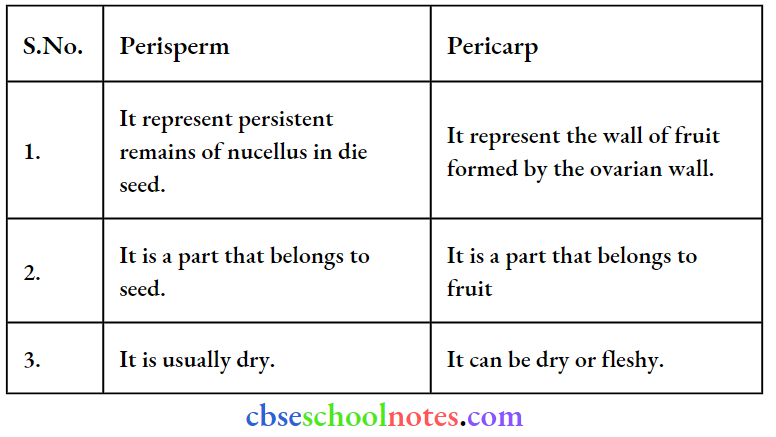
Question 14. Why is an apple called a false fruit? Which part (s) of the flower forms the fruit?
Answer:
False fruits are those fruits in which accessory floral parts also contribute to fruit formation. In apples, the thalamus also contributes to fruit formation. Therefore, it is called a false fruit. The fruit develops from the dead ovary of the flower.
Question 15. What is meant by emasculation? When and why does a plant breeder employ this technique?
Answer:
Emasculation is the practice of removal of stamens/anthers before the anther dehiscence from bisexual flowers in female parents. A plant breeder employs this technique in die immature bud condition before die anthers begin to differentiate. It is required to prevent self-pollination.
Uses in plant breeding:
- Prevention of contamination and pollination of the stigma of female flowers wide foreign undesirable pollens.
- Prevention of damage by animals.
Question 16.If one can induce parthenocarpy through the application of growth substances, which fruits would you select to induce parthenocarpy and why?
Answer:
Only fleshy fruits like orange watermelon, lemon, etc. should be selected as parthenocarpic fruit. Here seeds of fruits are irritant during consumption of seeds the fruits are even more valuable. It is easy to make fruit juices, jams, etc. with seedless fruits.
Question 17. Explain the role of tapetum In the formation of pollen-grain walls.
Answer:
Tapetum is die innermost wall layer of a microsporangium. It nourishes the developing pollen grains and also helps in the formation of a wall of pollen grains. The cells of tapetum secrete Ubisch granules that provide sporopollenin and other materials for exine formation.
Question 18. What is apomixis and what is its importance?
Answer:
Apomixis is a type of asexual reproduction that mimics sexual reproduction to form seeds without fertilization. In apomictic seeds, parental characters are maintained in the progeny/offspring, as there is no meiosis or segregation of characters. If desired hybrid seeds are made apomictic the farmers can keep on using the hybrid seeds to raise new crops year after year.



